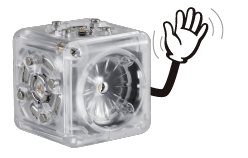
Last weekend I got to play with an amazing group of people at a two-day workshop in Boston. It was called Programming Reality: From Transitive Materials to Organic User Interfaces and was part of the CHI 2009 conference. We spent the second day at the MIT Media Lab where we broke into small groups to work on design sketches of future systems. One group made a flexible display out of silicone, another made a laser-cut laminated material that undulated from the motion of embedded paper cones. There was a rollable input device and an augmented shrine to personal robots. Our group made a prototype of an inflatable display — we built plastic pixels using the ultrasonic welder and manually inflated them through a series of tubes. Generally, we were all interested in how people are going to interact with future stuff. When everything around us is computational or robotic, how are we going to manage it all? Even now it seems that we don’t really program computers anymore, we program the world around us.














